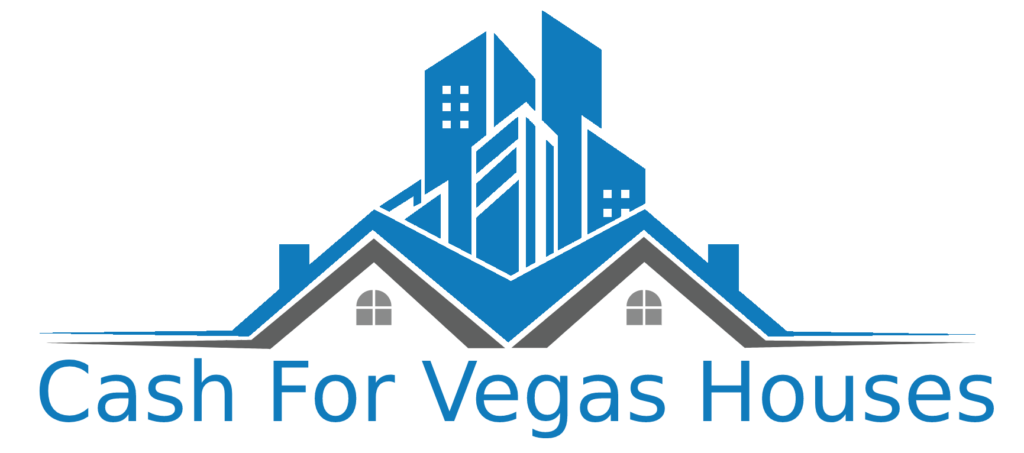The difference in landscapes between rural and the urban of Nevada provides a home not only for Las Vegas and Reno but also for wide open ranges and little town communities. And this is accompanied by the entertainment explosion and Nevada’s growing economy, continually drawing new residents, thereby increasing the need for housing in a population that has its share of blaring city life, followed closely by a serene country show. The real estate market in Las Vegas is fast-tracked but also varies in between an array of high-rise condos, homes in suburbs, and fine homes. Reno is popularly known as the “Biggest Little City in the World,” where a prosperous modern-day economy is being created due to the growing technology sector, and affordable housing developments and jobs are peppering the cities around this perfect town. The rest of the rural areas present a whole new vibrant world-empty where it becomes easy, with a different speed than a more affordable one, to be able to own a home for those who come from different walks of life. However, given the few options available, and the pace with which those with first-time feelings enter the housing scene, brings its own set of problems. New home ownership can both excite and overwhelm. High upfront fees, such as down payment, mortgage rate, and closing fees, tend to thwart many Nevadans from stepping into a home of their own. And this is where first-time homebuyer programs can really help.
First-time homebuyer programs, designed to assist individuals and families in buying their first home, offer financial help, direction, and in certain cases, reduced-interest loans, all to make housing more affordable and readily available. In the end, this being state-funded or non-profit help, these funds have the potential to ease the financial stress involved in buying a home and provide Nevadans with a stepping stone to continued ownership. This blog aims to point out these good resources for the first-time homebuyers of Nevada. We will go into multiple programs-aid grants, loans, and financial incentives specifically created for first-time buyers-and cover their requirements, benefits, and possible drawbacks, as well as offer information about which programs could be of most use to home buyers. It is expected that, by the end of this manual, readers will be well aware of the aforementioned avenues to lend assistance to their dreams of owning a home in Nevada and will be armed with knowledge on the real estate sector to pursue their tasks with confidence.
Overview of First-Time Homebuyer Programs in Nevada
The Nevada Housing Division (NHD) plays a crucial role in supporting first-time homebuyers across the state, offering various programs designed to make homeownership more attainable. NHD provides financial assistance, counseling, and education to help new buyers understand the process and manage the costs associated with purchasing a home. Key programs include down payment assistance, low-interest loans, and grants, all tailored to help first-time buyers bridge the affordability gap.
Additionally, the Nevada Rural Housing Authority (NRHA) supports buyers specifically in rural areas, where unique housing needs often require specialized assistance. By working closely with local governments, NRHA extends financial help and offers incentives for rural homeownership. Both NHD and NRHA also partner with private lenders to offer competitive mortgage options, combining resources to better serve Nevadans. These agencies’ collaborative efforts create a well-rounded support system, making it easier for first-time buyers to access affordable homeownership options across Nevada.
Key First-Time Homebuyer Programs in Nevada
1. NHD Home Is Possible (HIP) Program
The Home Is Possible (HIP) program dispenses generous down payment assistance to qualified first-time homebuyers through the Nevada Housing Division (NHD), increasing opportunities for lower-income homeownership. Eligible individuals can receive assistance worth up to 4% of their loan amount in order to support their down payment or closing cost, thus drastically reducing upfront expenses. The program targets purchases for those buyers with at least a 640 FICO score and annual income not exceeding $135,000. The submission of a single application is simple, and processing is conducted through approved lenders, working with the borrower to determine eligibility and complete the required application.
2. NHD Home Is Possible for Teachers
Home Is Possible for Teachers, an offshoot of the HIP Program, aims to provide advantages to licensed K-12 teachers currently employed in Nevada schools to help them in homeownership. The program provides an educator a 30-fixed mortgage, with down payment assistance granted at 4%. To be eligible, teachers must be employed by a Nevada school district or a charter school and meet certain credit requirements. The program provides down payment assistance and unique conditions that ease the home-buying process for teachers wishing to settle down in Nevada.
3. NHD Home First Program
The Home First Program aims at supporting first-time and low-income buyers concerning the initial cost outlay of buying a house. The program makes available non-repayable loans to cover down payments or closing costs, making the initial purchase less financially burdensome. It is fully forgiven if a buyer stays in the home long enough, after which the loan is discharged. With income limits in place, participants must also complete a housing education course, meaning it tries to support a person who is committed to owning a home for the long term.
4. Home At Last (HAL) Program
The Reno Rural Housing Authority offers the Home At Last (HAL) Program, which provides down payment assistance and affordable fixed-rate mortgages for rural homebuyers. The underlying purpose is to promote stable homeownership in rural Nevada communities by providing eligible buyers with up to 5% of the loan amount in down payment assistance. The buyers must comply with income and purchase price limits, which are different by county, and undergo homebuyer education. The HAL program fits well with their home purchase efforts in the eligible rural regions, being a champion of sustainable development and growth of communities outside the city centers of Nevada.
5. Workforce Initiative Subsidy for Homeownership (WISH) Grants
WISH grants are structured to deliver a 4:1 match on savings for down payments, providing major help for low-income and moderate-income first-timers. The program will contribute $4 for every $1 of the buyer’s savings, a major boost toward gathering the down payment. There are specific community-based banks that you must work with, and you have to take a homebuyer education course. The program is a great resource for those who can spare part of the down payment and would like to take advantage of the matching money.
6. Middle-Income Down Payment Assistance (MDPA) Grants
MDPA grants provide much-needed help to middle-income families by facilitating 5:1 matching savings programs for down payment relief. This programming is distinctly for individuals that cannot quite meet the minimum low-income criteria set forth by the other programs but are still in need of down payment assistance. The applicants are required to meet certain income guidelines, from one’s applicable lenders. This grant basically fills in the void between middle-income buyers’ payment demands and the lesser nedds of them getting financial assistance into homeownership.
7. Home Means Nevada Rural Down Payment Assistance
The program enables people who live in rural areas to gain down payment assistance to buy in Nevada’s more remote areas. Favorable forgiveness terms show up for buyers who promise to stay in their homes for a certain period of time, making it even more beneficial for long-term stays. This initiative allows growth in rural communities and is time-sensitive, so, to get their shares on time, interested buyers are to apply quickly-with set frequencies for application expiration.
National Loan Programs for First-Time Buyers
1. FHA Loans
FHA loans are designed for buyers with lower credit scores, requiring them to have as little as 3.5% down for a Butter score above 580. An FHA loan gives more leeway when it comes to the ratio of debt to income. If the down payment is below 10%, MIP needs to be paid for the life of the loan.
The larger advantages held by FHA loans can be summed as follows:
- Low Down Payment:3.5% is the minimum down for buyers with a credit score above 580.
- Lower Credit Score Requirements:Easier approval for buyers under 620.
- Flexible Debt-to-Income Ratios:These loans let borrowers qualify even when their debts have reached heightened levels.
2. VA Loans
It is available for active-duty military service members, veterans, and eligible spouses with zero down payment, no private mortgage insurance, and generally lower interest rates. There are a few restrictions based on the service history that must be followed, which makes this option highly desirable for military personnel.
Following are some features of VA loans:
- No Down Payment: Qualified veterans and service members can finance 100% of the purchase without down payment.
- No PMI Requirement:No PMI is charged monthly, thereby reducing overall costs.
- Competitive Interest Rates: VA loans generally can offer features including lower rates compared to conventional loans.
- Lenient Credit Requirements: VA does not specify a minimum credit score; however, most lenders require a minimum of 620.
3. USDA Loans
USDA loans are ideal for rural purchasers as it allows an option for no down payment with competitive rates to help low- and mid-income applicants. Properties must be in USDA-eligible rural areas and qualifying income limits apply based on family size and the county.
Key benefits of USDA loans:
- No Down Payment: Enables qualified rural purchasers to purchase 100% financing on any loan property.
- Competitive Rates: Includes low-interest rates comparable to those for other government-backed loans.
- Income Requirements: Targets low and moderate-income buyers; eligibility is variable based on location and family size.
How to Qualify for Nevada First-Time Homebuyer Programs
In general, an applicant for any first-time homebuyer program in Nevada must meet specific standards:
- Income Limits:To assist low to moderate-income buyers, general income limits are set for most programs depending upon household size and geographic areas. Each program has specific limits, so it is crucial to check to confirm eligibility.
- Credit Score Requirements: Although different credit score minimums exist among various programs, the Housing Initiative Program generally requires applicants to have a score of at least 640 or higher. FHA and some other loans may allow lower scores, but lower scores could impact the down payment and terms of the loan.
- Homebuyer Education Course:A vast majority of programs require applicants to complete an approved homebuyer education course. This course covers budgeting, the mortgage process, and essential home maintenance, which all help prepare buyers for homeownership.
- Approved Lender Partnerships: Working with an approved lender for these programs is an absolute must. The reason is that these lenders would already know the different requirements and be able to guide applicants through the whole application process while going through eligibility and maximizing the available benefits.
By adhering to these qualifications and working closely with approved lenders, first-time homebuyers in Nevada can access resources that effectively help them attain homeownership.
Step-by-Step Guide to Choosing the Right Program
- Evaluate Your Financial Readiness:
It is generally important to evaluate your financial situation before settling for a first-time homebuyer program. This involves analyzing your savings meant for down payments, the monthly income, the debt-to-income ratio, and the credit score. Many programs, like the NHD Home Is Possible (HIP) program, have specific income limitations and credit score prerequisites. Knowing your financial strengths and weaknesses will enable you to filter out programs that fit your profile. This way, you will avoid disappointment in the later stages and won’t waste time on programs you would not qualify for. - Consider Location Preferences:
Location is important when choosing a first-time homebuyer program. Some programs are geographically specific and provide certain advantages for residents in certain areas. For instance, the Home At Last (HAL) program offers down payment assistance for buyers in rural areas of Nevada. Other urban areas, like Las Vegas, possibly could cater to the needs of urban first-time buyers, such as the HIP program. Being that you are flexible about location, think of placement suitable for your lifestyle and work commute. It is also to be noted that some rural programs may offer a high level of assistance or lenient eligibility requirements. - Explore Career-Specific Incentives:
First-time homebuyer programs are often designed around professionals in certain fields. For example, the NHD Home Is Possible for Teachers offers benefits to educators in Nevada, supplying them with down payment assistance and lending lower rates. Other systems are set up for healthcare practitioners, civil-service staff, or even first responders. It is very important to find out if your job opens the door to any unique incentives when you take on homeownership since they will in all likelihood keep any costs you may need to pay out of pocket at a lower margin. Other formal, career-based programs should be further researched to ensure you’re making the best use of available resources.
Compare Offers from Multiple Lenders:
While it’s preferred that you’ve already found a program you believe is most suitable for you, it’s wise to solicit quotes from several qualifying lenders. While lenders work within the same program, they may still offer you different rates, fees, and terms. By comparing offers, you can see what’s being offered and ensure you get the best possible terms. Some lenders may have lower interest rates or different down payment options, both of which can have huge impacts on long-term payments. A plus might be that some lenders have more experience or better customer service, easing the stress of home buying. Use this comparison phase to get a grasp of all costs and terms before moving forward with the final decision.
Additional Tips for First-Time Buyers in Nevada
- Budgeting and Preparing for Closing Costs:
It’s critical that budgeting be done for the closing costs besides the down payment. These costs generally range from 2% to 5% of the home’s purchase price. These costs may include appraisal fees, home inspection fees, title insurance, and lender fees, among others. Plan ahead by saving extra money for these expenses to avoid surprises. Some programs like Home Means Nevada Rural Down Payment Assistance help you cover down payment and closing costs, so be sure to ask about these extra perks whenever you’re looking at programs. - Understanding Debt-to-Income (DTI) Ratios:
While assessing your qualifications for a loan, lenders usually want to know your DTI ratio to see how easily you can pay your debts. Your DTI ratio is arrived at using the formula of monthly debt divided by gross monthly income. First-time home buyer programs often set limits for the DTI ratio between 40% – 45%. Working to keep debts low and paying off other debts that you may have will help you to qualify for better loans. - Shopping for the Best Mortgage Rates and Terms:
Shopping for mortgage rates is perhaps the most important step in the process of buying a home. Even a small difference in these rates can tremendously affect your monthly payment and the total cost of your loan. Don’t accept the first offer; compare several mortgage lenders’ offers to ensure you are happy with the terms. You should also ask about any loan programs that are available that will provide lower interest rates for first-time home buyers, such as FHA or USDA loans.
Budget wisely, understand the DTI ratio, and shop around for good mortgage rates to be able to get the best deal possible as a first-time home buyer in Nevada. These little steps will de facto help to ensure that your home is both relatively affordable and financially sustainable in the long run.
Conclusion
Boyer called Nevada a vortex of wide-ranging opportunities for first-time buyers striving towards making their dream of owning a home come true in reality. Programs like Home Is Possible (HIP) and Home At Last (HAL) offer necessary down-payment assistance and other loan options that help alleviate the financial burden on homebuyers. For owners in rural areas, there lies a program fashioned in respect therefore; the Home Means Nevada Rural Down Payment Assistance.
Furthermore, other national loan programs such as FHA, VA, and USDA broaden the horizons available to first-time buyers owing to their flexible down-payment requirements, with some options allowing no down payment at all. These programs in particular could benefit individuals with slightly lower credit or military veteran standing.
In order to fully utilize the above resources, one needs to understand the various eligibility requirements: income limits, credit score requirements, and homebuyer education courses. While you will necessarily look at each, with the involvement of an approved lender, they can help you determine which ones are most applicable to your needs, thus enabling an informed decision-making process.
By taking advantage of these programs and resources, first-time purchasers in Nevada would greatly reduce the burden they’ll usually carry for their up-front costs and lock in a loan with favorable terms. Be sure to compare lender rates to get the best mortgage rates while also budgeting for closing costs and making sure that you know what the key financial principles are around debt to income ratios so that, in the end, you get the best deal.
In conclusion, Nevada’s first-time homebuyer programs therefore provide a key conduit through which one can leverage in order to make the first home purchase. They go a long way to alleviate the impediments of financial strain that would eventually make the dream of homeownership attainable for more Nevadans. There is no reason not to explore the opportunities available to owners—take advantage of these opportunities to ensure a smoother and more affordable home-buying experience.
FAQs for Nevada First-Time Homebuyer Programs
- What qualifies as a “first-time home buyer” in Nevada?
- In most Nevada programs, a first-time homebuyer is defined as someone who has not owned a home in the past three years.
- How much down payment assistance is available for first-time buyers in Nevada?
- Nevada offers various assistance programs, with amounts up to $25,000 through the Home Means Nevada Rural program and up to 4% of the loan amount through the Home Is Possible program.
- Can I qualify for more than one first-time homebuyer program?
- It depends on the specific program requirements. Some programs allow layering with other forms of assistance, while others are standalone.
- What credit score is required to qualify for these programs?
- Most programs require a minimum credit score of 640, though some options for FHA loans may accept lower scores with larger down payments.
- Do I need to be a Nevada resident to qualify for these programs?
- Yes, for most programs you must either be a Nevada resident or be purchasing a primary residence in Nevada.
- What are the income limits for Nevada first-time homebuyer programs?
- Income limits vary by program and county. For example, the Home Is Possible program limits range from $88,100 to $131,860 depending on household size and location.
- How do I get started with a Nevada first-time homebuyer program?
- Begin by contacting an approved lender listed on the Nevada Housing Division or Nevada Rural Housing websites. The lender will help determine eligibility and guide you through the application process.
- Is a homebuyer education course required?
- Yes, most first-time homebuyer programs in Nevada require applicants to complete an online homebuyer education course to qualify.



